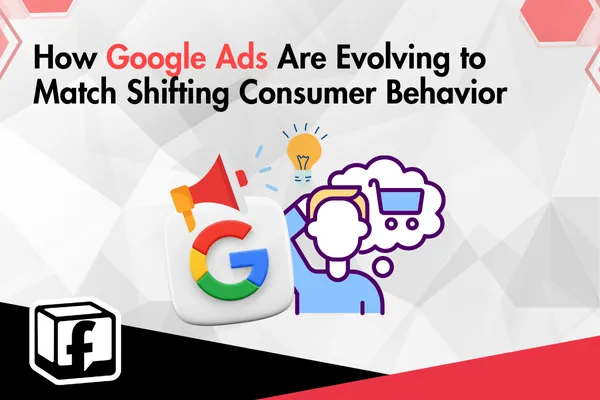
How Google Ads Are Evolving to Match Shifting Consumer Behavior

How Google Ads Are Adapting to Consumer Behavior in 2025
In a world where consumer habits shift rapidly, Google Ads is no longer just a keyword bidding platform, it’s a dynamic, AI-driven advertising engine. As user behavior becomes more fragmented, personalized, and privacy-conscious, Google Ads is adapting to consumer behavior in ways that demand attention from modern marketers.
Let’s explore how your ad strategy can keep pace with this evolution.
1. Personalization at Scale
Today’s consumers expect ads that match their needs, interests, and intent. Google is addressing this with tools like:
Responsive Search Ads (RSAs) that adjust headlines and descriptions in real-time
Customer Match Audiences that allow targeting based on behavior, past purchases, and engagement
Performance Max campaigns that automatically personalize across all Google channels
This means advertisers must craft versatile, consumer-centric ad creative to thrive in 2025.
2. AI-Powered Automation
Google has deeply embedded AI and machine learning into ad delivery. The goal? Optimize every impression based on real-time consumer behavior.
Key tools include:
Smart Bidding strategies that adjust for conversion potential
Predictive targeting that anticipates user actions
Dynamic creatives that serve the best ad based on user data
Automation reduces guesswork, but also means marketers must feed it high-quality, conversion-ready assets.
3. Multi-Device & Cross-Platform Behavior
Consumers no longer interact linearly. A typical buyer might:
Discover a brand on YouTube
Search for reviews on mobile
Convert later via desktop
Google Ads now emphasizes cross-platform tracking and engagement, encouraging advertisers to:
Use Google Signals and GA4 for attribution
Run omnichannel campaigns that appear across YouTube, Display, and Search
Focus on unified messaging, regardless of device
4. Privacy-Conscious Targeting
As users demand more control over their data, Google is responding with:
FLoC alternatives (Privacy Sandbox)
Cookieless targeting tools
Enhanced consent management and transparency features
To adapt, advertisers need to focus on first-party data, permission-based retargeting, and ethical personalization.
Conclusion:
Google Ads is no longer about just placing the right bid, it’s about understanding consumer behavior and meeting users exactly where they are. As searchers become more discerning and privacy-aware, your ad strategy must evolve with them.
By embracing automation, cross-platform consistency, and behavior-driven insights, marketers can ensure their Google Ads campaigns stay relevant, effective, and human-focused.
How Ads with Finesse Can Help You
At Ads with Finesse, we specialize in crafting ad campaigns that highlight the best customer experiences, ensuring your audience connects with your brand on an emotional level. Our team carefully selects authentic, high-impact reviews and seamlessly integrates them into your ad strategy.
Learn more about our services today and turn your Google Ads into your most powerful marketing tool with Ads with Finesse.
Let’s create ads that resonate, convert, and build trust.
Check out our blog and services at adswithfinesse.com.